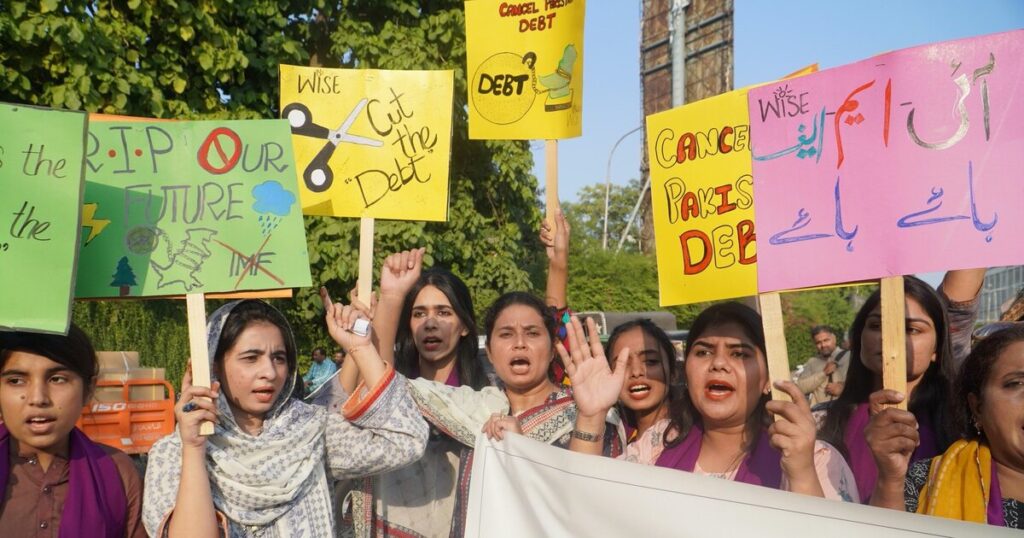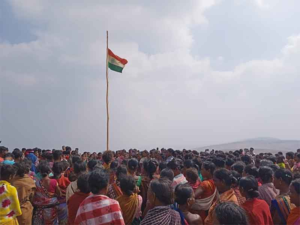[The IMF mission is currently in Pakistan on a 10-day visit to discuss the stalled ninth review of the country’s current funding programme. The loan talks were restarted after the government finally yielded to IMF demands.]
Amidst an increasingly acute balance of payments crisis and desperation to secure external financing, with less than three weeks’ worth of import cover in its foreign exchange reserves, Pakistan is finally ready to swallow the bitter pill of the IMF’s “stringent” conditions to revive the loan programme. The analysts have termed the technical level talks the “toughest” ever as the Fund has refused to show any leniency in its conditions set for the revival of the loan facility.
The government increased the price of liquefied petroleum gas (LPG) by 30% and average electricity rates by a minimum of Rs 6 per unit at the start of talks with the IMF. This comes on top of an earlier 16% increase in petroleum prices and the removal of an exchange rate cap, which resulted in a 14% depreciation of the Pakistani currency. As a result, the Pakistani rupee has lost almost 20% of its value against the US dollar within a week after the removal of price caps imposed by the government.
Pakistan’s economic situation is so precarious that even bilateral and multilateral development partners have refused to provide financial help. Friendly countries had been holding back their promised additional support—about $2 billion from Saudi Arabia, $1 billion from the UAE, and about $2 billion from China—on top of recent rollovers, mainly because of an ongoing stalemate between the finance ministry and the IMF. Debt experts believe that Pakistan, which is deeply in debt, is on the verge of default.
According to reports, the mission has asked Pakistan to implement fiscal measures to meet budgetary targets, introduce reforms in the power and energy sectors, review subsidies to the farming and export sectors, and implement a privatisation programme. With no other choice in hand, the government is ready to withdraw energy subsidies to big export industries, besides cutting non-salary, non-essential civil, and security costs as part of the harsh reforms required to obtain the Fund`s consent for an economic bailout.
The shattered economy, the fiscal situation, galloping inflation, and the depreciation of the Pakistan rupee all point towards a dysfunctional government, which has arrived at a point where it no longer enjoys any functional depth. It is not in a position to provide relief to people, in real terms, because all options have been exhausted. Even if the IMF programme is restored, most economists believe it would take years for the country’s economy to stand up.
With Pakistan’s debt-to-GDP ratio in a danger zone of 70% and between 40% and 50% of government revenues earmarked for interest payments this year, only default-stricken Sri Lanka, Ghana, and Nigeria are worse off. The choice, many analysts believe, is between the “tough conditions” of the IMF and a certain default, entailing an inflation rate of 35% in the first case and more than 70% in the second.
Negotiations with the IMF are underway at a point when Pakistan’s total external debt and liabilities have reached $127 billion (41% of GDP), sovereign bonds have lost more than 60% of their value, exports have declined to 7%, remittances have dropped to 11%, and foreign direct investment has reduced to 59%. Amid this situation, Pakistan’s external debt repayment obligations are $73 billion in 3 years (FY23–25), as per the latest published IMF country report, compared to prevailing foreign exchange reserves of $4–5 billion.
According to the Ministry of Finance, Pakistan pays more than $1 billion per month in debt repayment and interest on its public debt. However, since 2017, another major issue has emerged: external debt rollovers. These numbers have grown nine times, from $1.3 billion in 2015 to around $12 billion in 2022 (both public and private).
With the government’s total capitulation to the International Monetary Fund’s (IMF) demands for a successful review, the galloping inflation rate is expected to rise even further. Annual inflation, measured by the Consumer Price Index (CPI), spiked to a decades-high level of 27.55% in January 2023, the highest since May 1975. According to data released by the Pakistan Bureau of Statistics (PBS), inflation in urban and rural areas increased to 24.38% and 32.26% year-on-year, respectively. The inflationary trend was driven by a double-digit increase in almost all sub-indices, especially food and transport, the prices of which have rapidly increased.
Pakistan’s textile industry, which accounts for around 60% of its exports, is on the verge of closure. With the state unable to fund imports, containers of essential food items, raw materials, and medical equipment are held up at the port. Banks have refused to issue new letters of credit for importers. With this, there is a severe shortage of wheat in the country. The price of wheat flour, a key staple in the diet of Pakistanis, has skyrocketed amid the ongoing crisis. Citizens can be seen waiting in long lines for subsidised bags of flour, which are in short supply.Pakistan, the world’s 8th-biggest producer of wheat, is now importing 75 lakh metric tonnes of it to plug the shortage.
Under these prevailing circumstances, as an inflation-battered populace turns towards free meal centres, long queues outside welfare organisations’ centres providing free meals have already been getting longer for the past couple of months as people struggle to provide food for their families. Since the hike in fuel prices will not stop until the IMF is satisfied, there will be a further increase in commodity and energy prices.
The irony of the fact is that Pakistan’s ruling elite still refuses to realise the gravity of the situation and is not ready to sacrifice the privileges it has been enjoying for decades. Instead of cutting unnecessary benefits, it is once again determined to shift the burden onto the working classes.The country is sinking, but its debt-addicted ruling elite thinks it will swim out of these troubled waters because the world can’t afford to see it sink. But the world, this time, doesn’t seem ready to bail out Pakistan until and unless its ruling elite is ready to help itself.
With last year’s devastating floods, the ailing economy, a fresh wave of terrorism, and on-going deep political instability, things are heading towards a flash-point now, not only in economic terms but in social and political terms as well.
[Abdul Khaliq is with CADTM Pakistan. Courtesy: The Committee for the Abolition of Illegitimate Debt (CADTM), an international network of activists that campaigns for the cancellation of debts in developing countries.]




